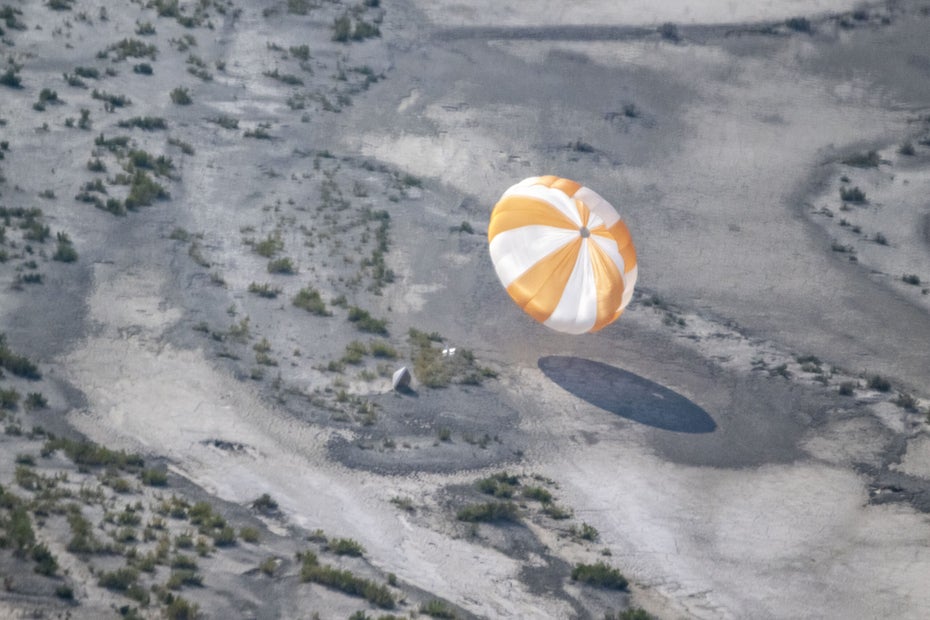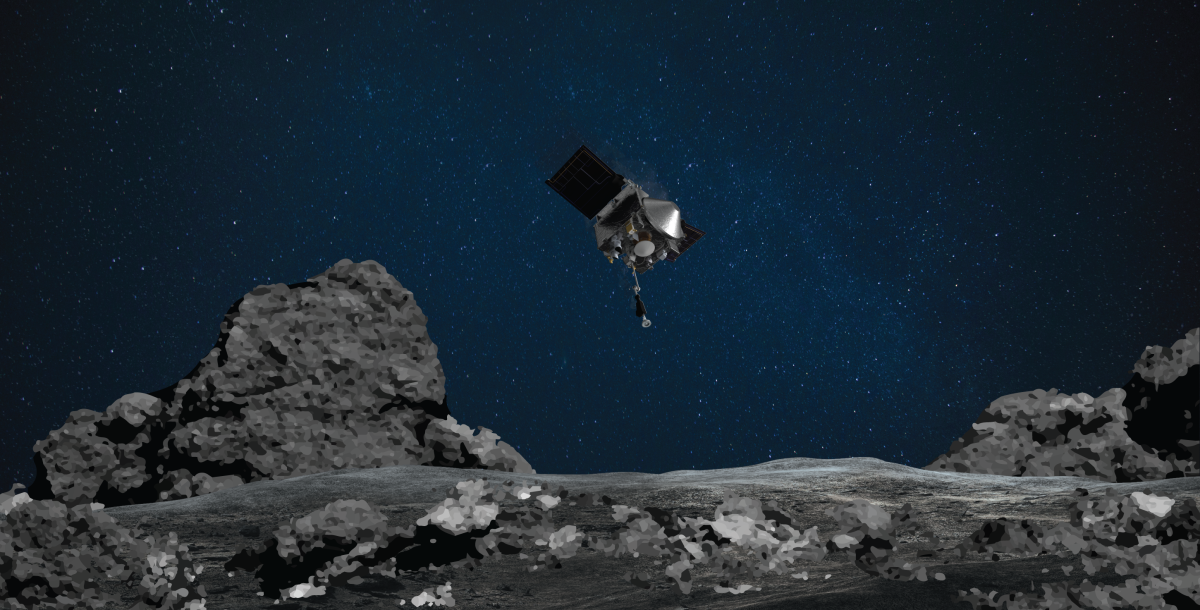It’s arguably one of NASA’s most important missions: On September 24, 2023, the Osiris-Rex spacecraft will pass by Earth, releasing a sealed sample from the asteroid Bennu that will give scientists valuable insights into when the sun and planets formed about 4.5 billion years ago.
the NASA’s Osiris-Rex mission On the verge of completing the first US asteroid transfer to Earth after a successful test launch in the western Utah desert.
Editor’s recommendations
“We’re now just weeks away from preserving a piece of our solar system’s history on Earth, and this successful airdrop test ensures we’re ready,” said Nicola Fox, deputy director of NASA’s Science Mission Directorate in Washington.

A helicopter dropped a replica of the sample capsule aboard the Osiris-Rex spacecraft on its way to Earth from 7,000 feet above the Utah desert during a test run (Photo: NASA // Keegan Barber)
“The pure material from asteroid Bennu will help shed light on how our solar system formed 4.5 billion years ago, and perhaps even how life began on Earth.”
On September 8, 2016, the Osiris-Rex spacecraft began its mission. A year later, the spacecraft began exploring its target, Bennu, an asteroid with a diameter of 494 meters and considered the second most dangerous asteroid in the solar system.
The asteroid was finally sampled on October 20, 2020. The following March, the spacecraft returned to Earth. Now she is looking forward to her there at the end of September.
When the spacecraft arrives, it will release its sample capsule containing rocks and dust from the asteroid, which will then land in the Utah desert. A NASA-led team is in the final stages of preparation, ready to hand over samples of material collected in space for nearly three years.
Under ideal conditions, the Osiris-Rex sample capsule will separate from the main probe, enter Earth’s atmosphere, and, after about 13 minutes, make a soft parachute descent.
The capsule holds an estimated 8.8 ounces of rocky material from the surface of asteroid Bennu. Researchers will study the sample over the coming years to learn more about the formation of our planet and solar system.
The capsule will enter Earth’s atmosphere at 4:42 pm, traveling at a speed of about 44,500 kilometers per hour. Live coverage of the capsule landing will begin at 4 p.m. on the NASA YouTube channel, the NASA app, and the agency’s website.
“We are now in the final stretch of this seven-year journey, and it feels like the final miles of the marathon, as proud joy meets resolute focus on completing the race,” said Rich Burns, Osiris-Rex Project Manager at Osiris-Rex. NASA’s Goddard Space Flight Center in Greenbelt, Maryland.

“Social media evangelist. Baconaholic. Devoted reader. Twitter scholar. Avid coffee trailblazer.”








More Stories
Longest jets in the universe discovered – giant particle streams as long as 140 Milky Way galaxies in a row
New method reveals 307 supernova remnants
Snapchat is upping the ante on augmented reality glasses